EVGA SuperNOVA 1600 P2 Power Supply Review
EVGA recently introduced its flagship power supply, the SuperNOVA 1600 P2. In addition to monstrous capacity, it also features 80 PLUS Platinum efficiency, promises top performance levels and offers silent operation in semi-passive mode.
Why you can trust Tom's Hardware
Packaging, Contents And Exterior
Packaging
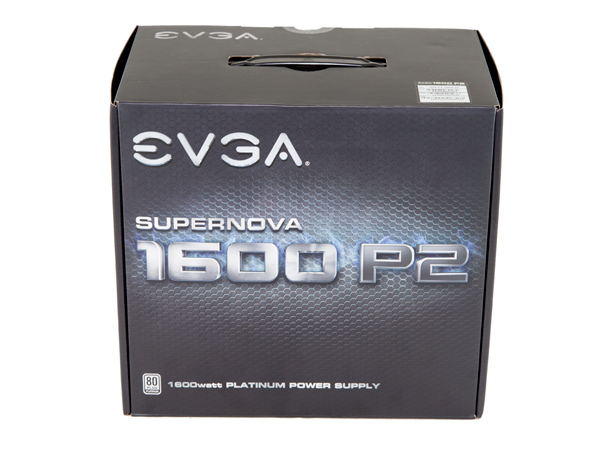
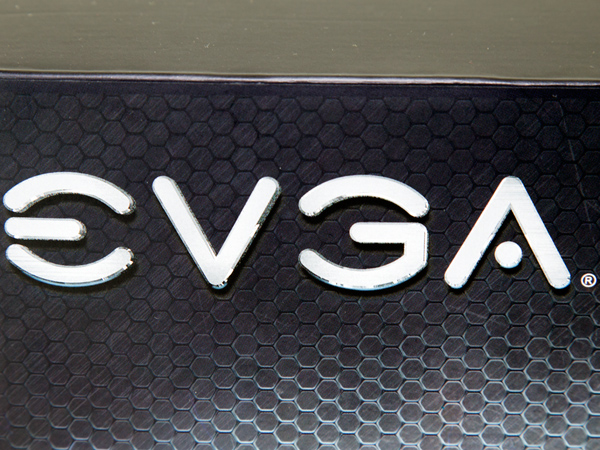
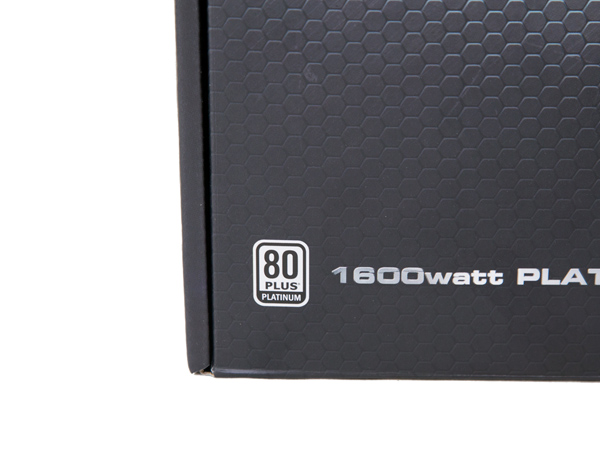
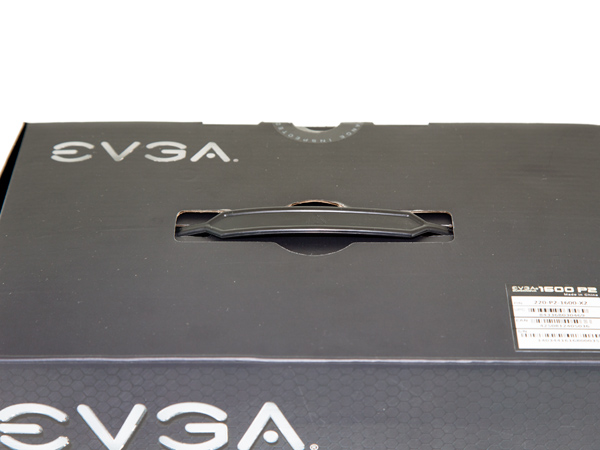
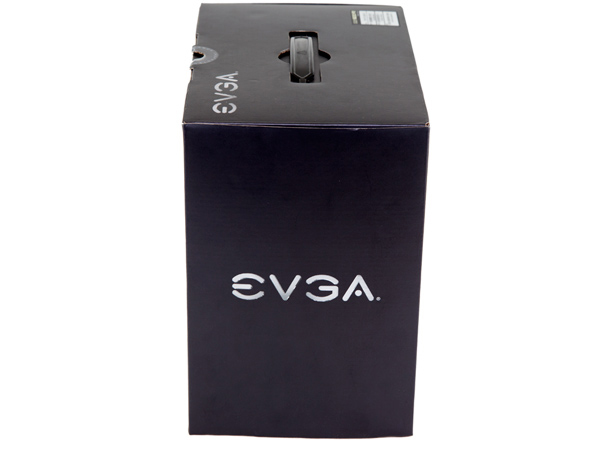
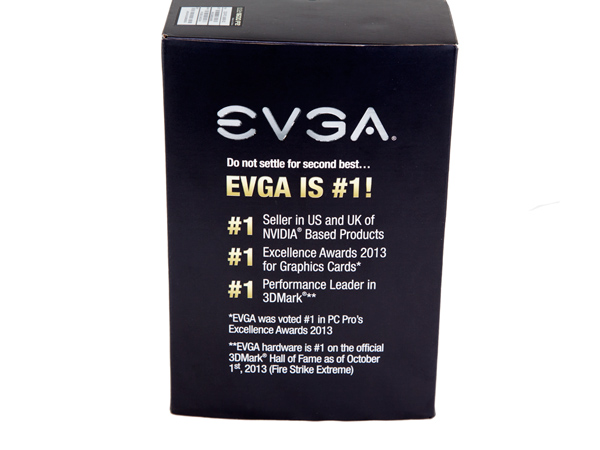
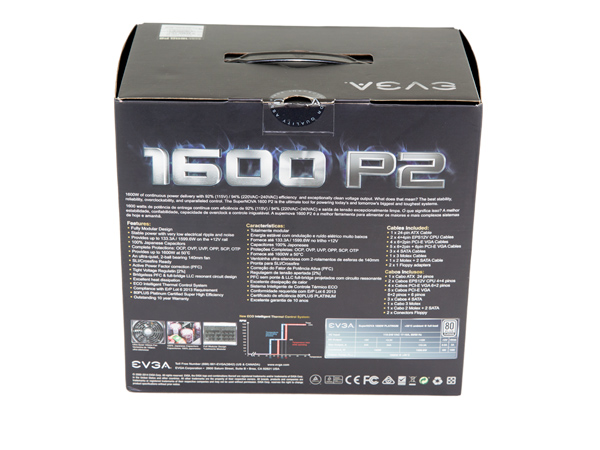
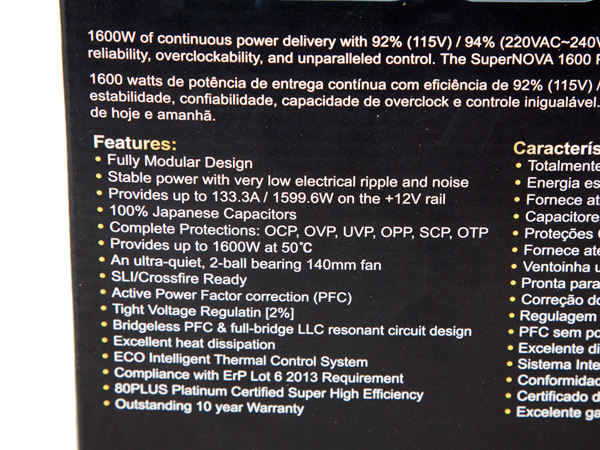
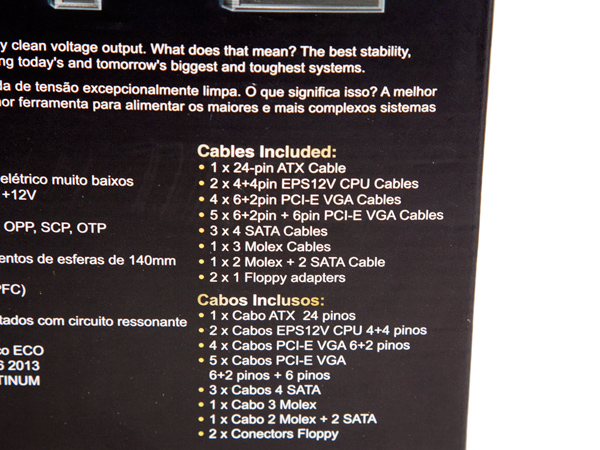
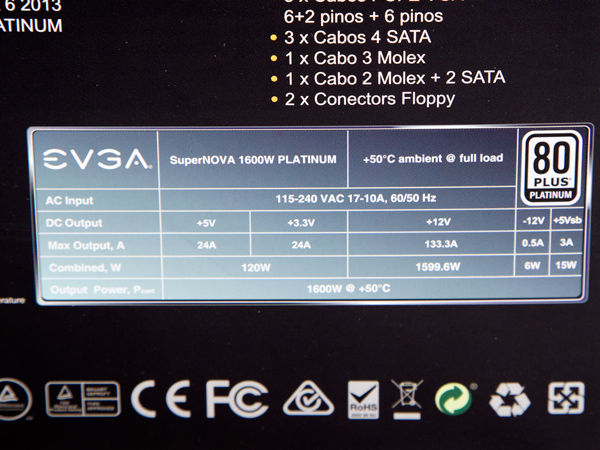
The PSU comes in a large and heavy box, which is expected given the device's huge dimensions. Thankfully, there is a handle to help you move the packaging around more easily.
The face of the box displays the model number in a large font, along with a much smaller series description. Obviously, EVGA wanted to highlight the capacity since there are so few 1.6kW PSUs available with Platinum efficiency. The 80 PLUS badge is located in the bottom-left corner, and is tiny.
One of the two sides displays only EVGA's logo, while the other side has the company's typical marketing fare focusing on its graphics cards. We believe that the time has come to change this marketing material, since it's somewhat outdated.
There's some useful information at the back of the box, including a long list of the product's important features. Another list depicts the included cables and the available connectors in the 1600 P2. Near the bottom-right corner is the power specifications table, along with a series of icons describing various compliances.
Three small images focus on the quiet fan (as described by EVGA's claims), the Japanese caps and the PSU's fully modular cable design. In addition, a graph demonstrates the operation of the fan with the ECO (semi-passive) mode enabled. According to that graph's details, the fan starts to spin when the internal temperature reaches 55 °C. That's a pretty high level, but the Japanese caps are rated for 105 °C and handle it easily. After all, EVGA wouldn't offer a 10-year warranty if the company wasn't confident about this platform's reliability.
Contents
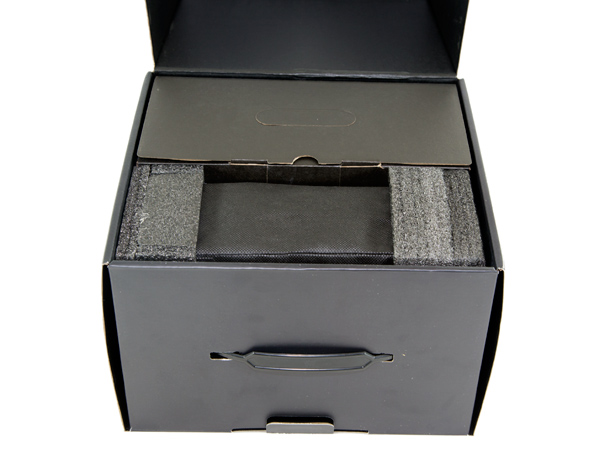
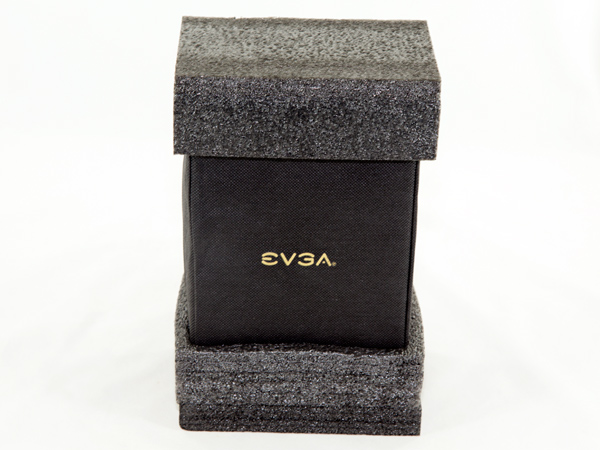
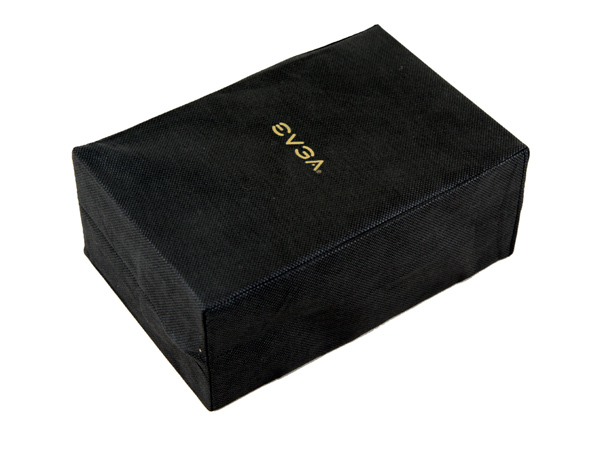
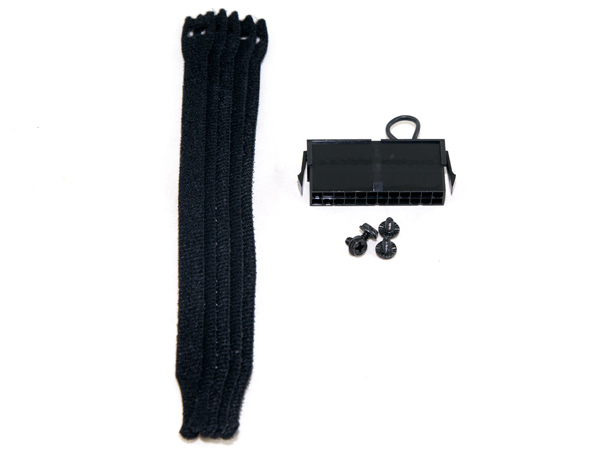
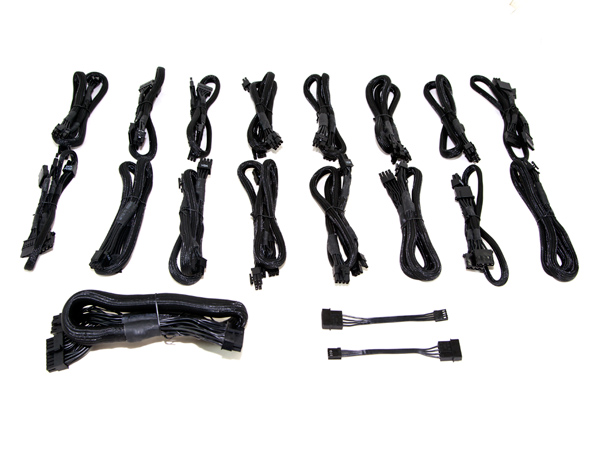
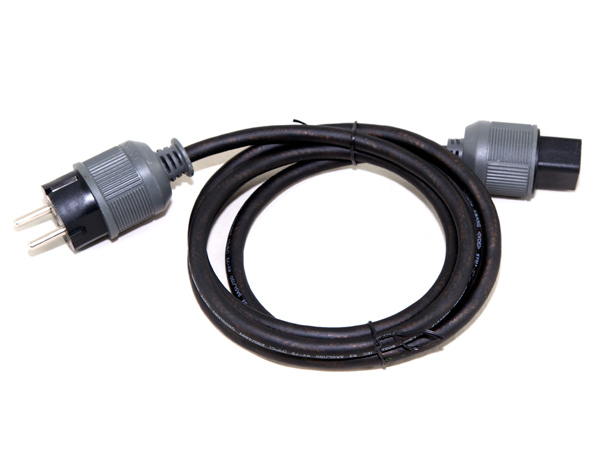
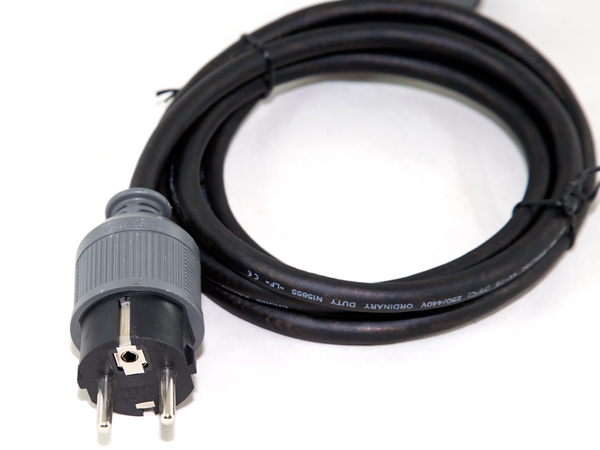
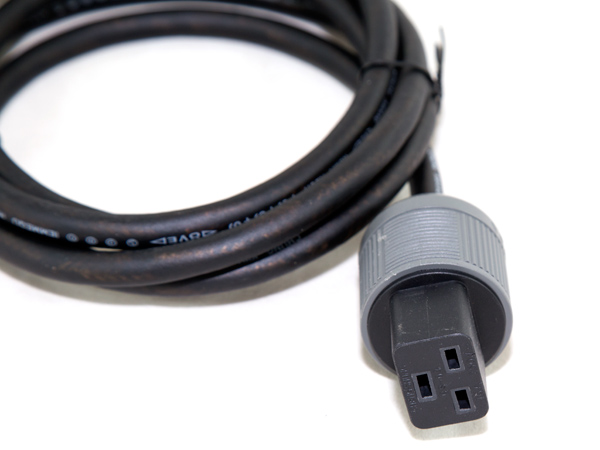
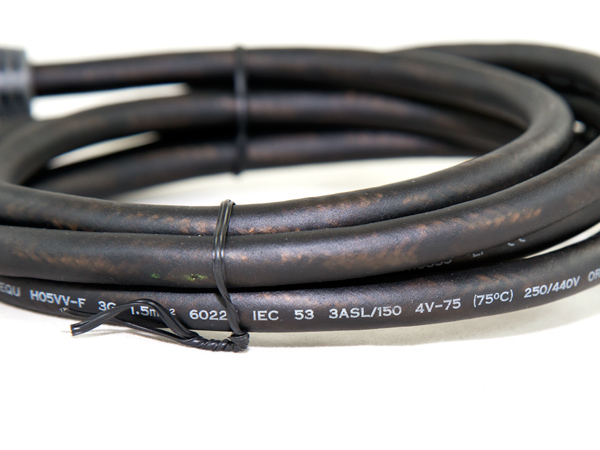
Two foam spacers protect the PSU. Moreover, it comes wrapped in a cloth bag, imprinted with EVGA's logo.
The bundle includes a set of fixing bolts, some Velcro straps and an ATX-bridging plug. This plug comes in handy if you want to start the PSU without actually powering on a machine (like when you want to check if your liquid cooling system works properly). You also get a large number of modular cables, and EVGA provides a pouch to store the unused ones in.
Get Tom's Hardware's best news and in-depth reviews, straight to your inbox.
The provided power cable is very thick, and as you can see from the photos, it features a heavy-duty C19 connector. This connector is essential, since during full load the PSU draws more than 15A from the wall with 115VAC input.
Exterior
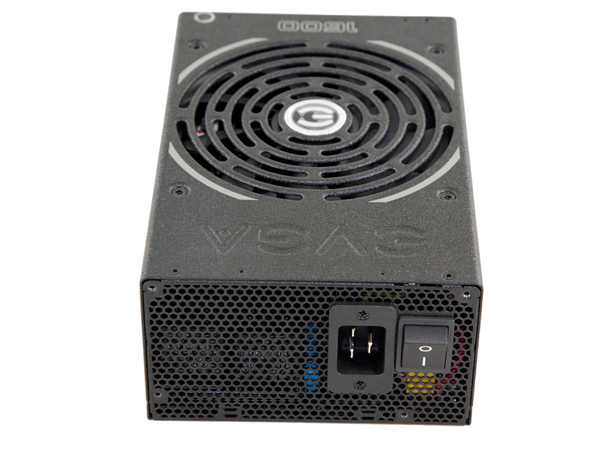

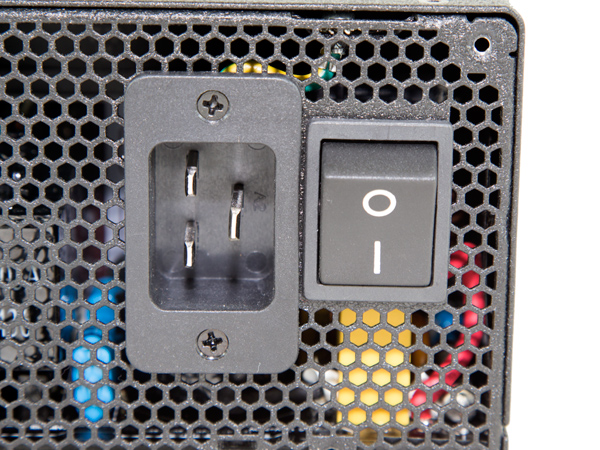

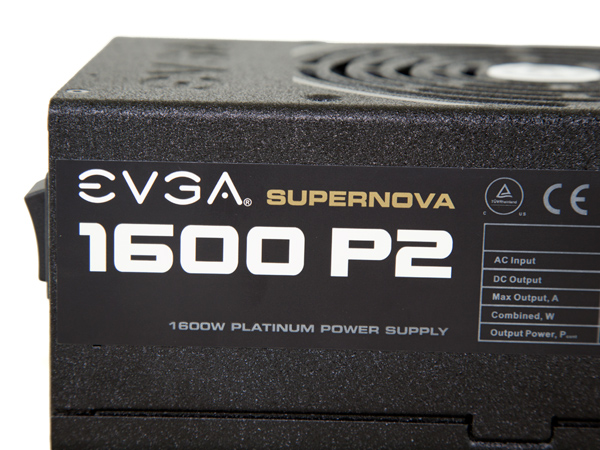
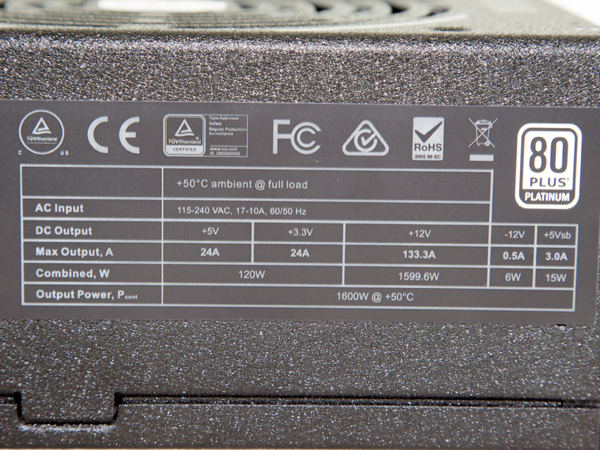
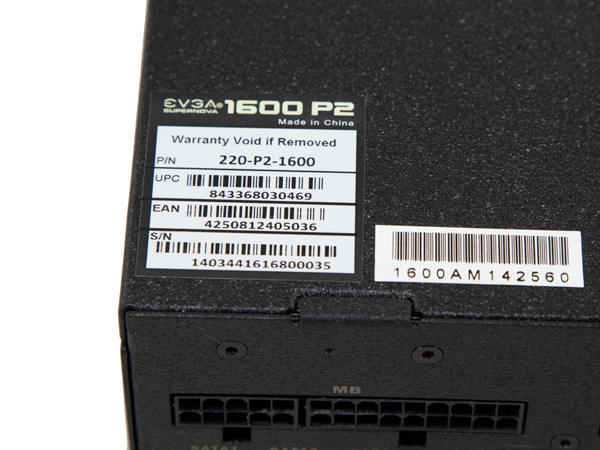
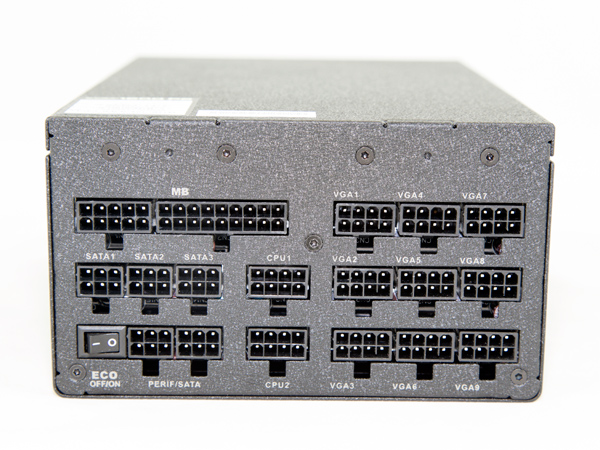
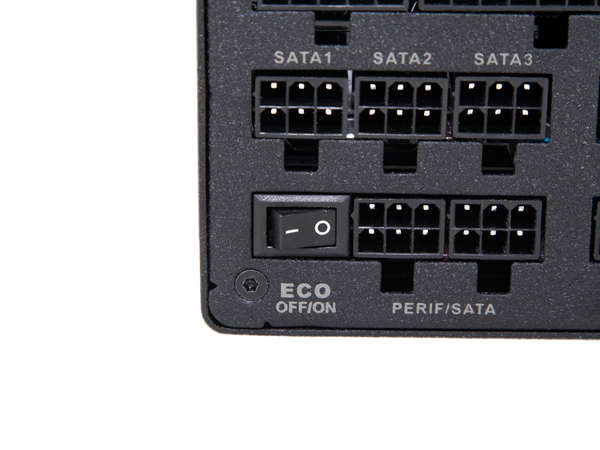
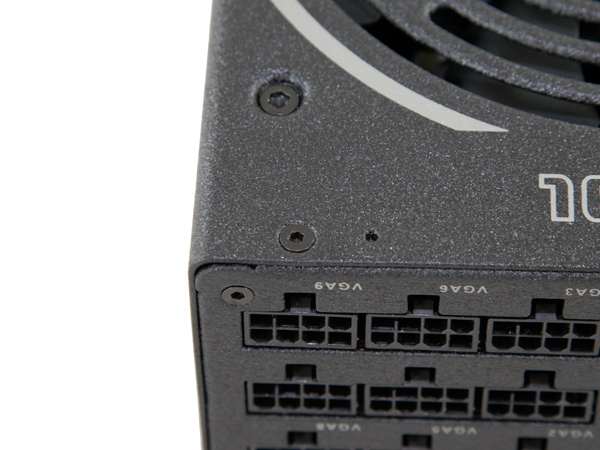
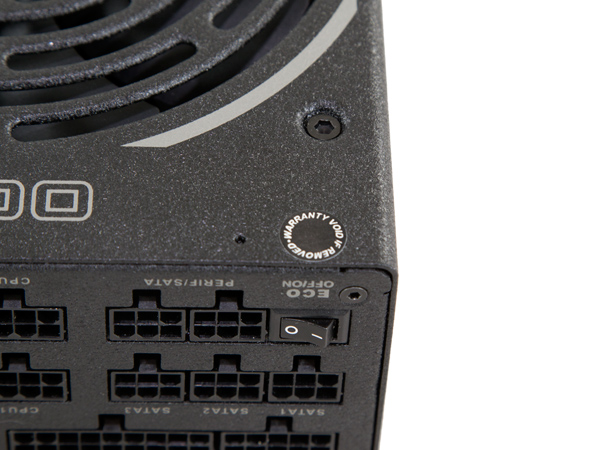
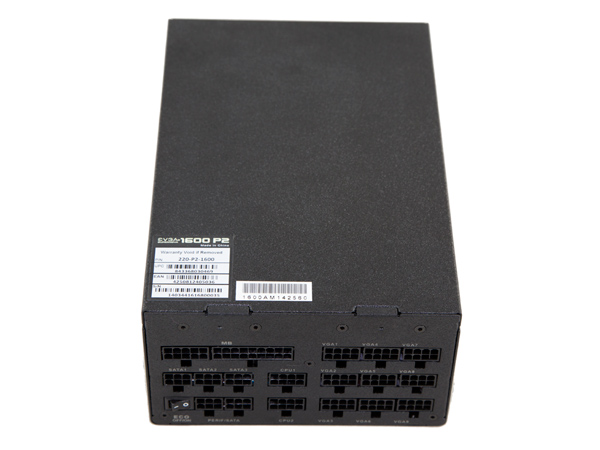
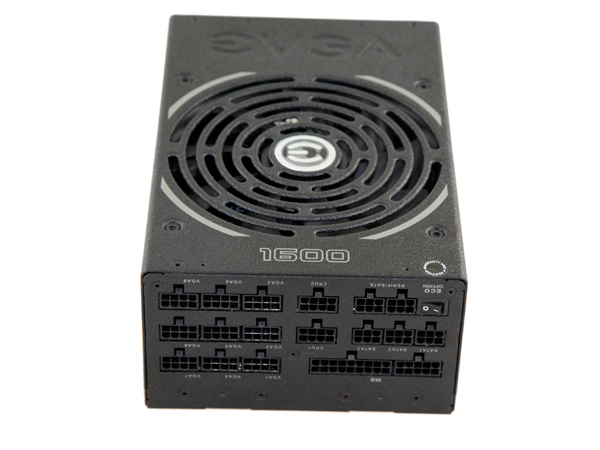
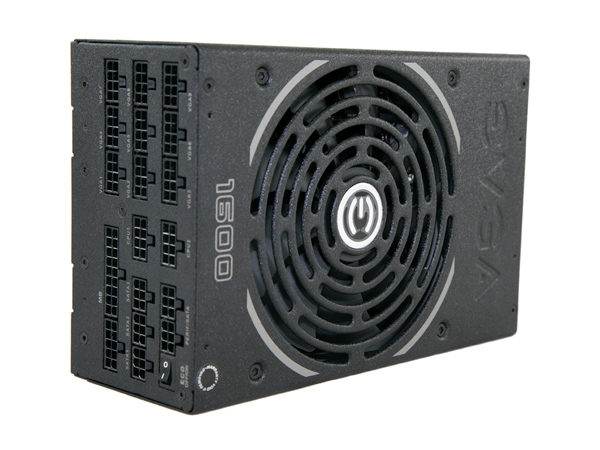
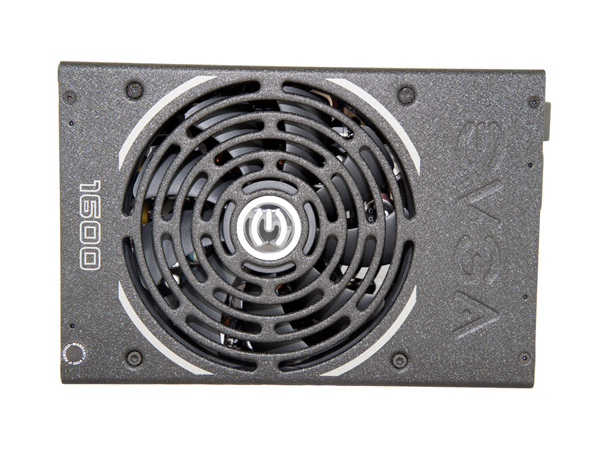
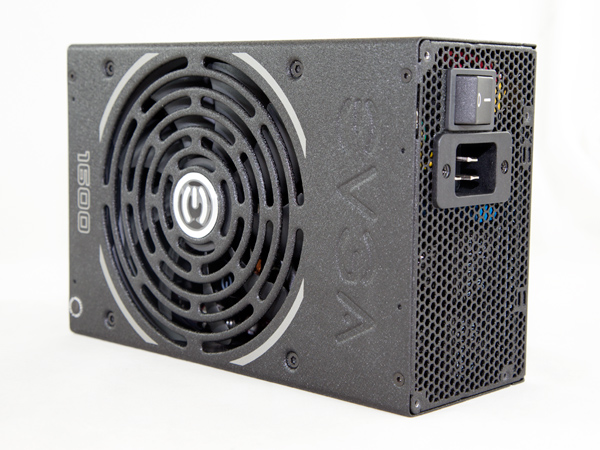
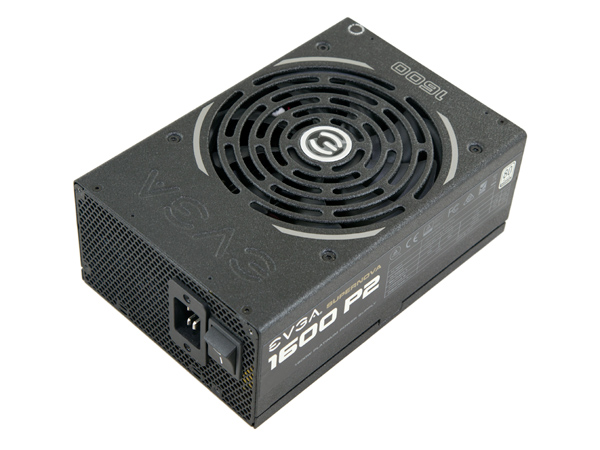
The double-textured matte coating is fingerprint-proof and isn't scratched easily. At the front side, we find the usual honeycomb-style mesh and a C20 inlet. Right next to the latter is a large on/off switch. On both sides, large decals display the unit's specification and the huge bottom side has only two, small stickers.
The fully modular panel hosts a number of sockets, since the huge power levels this unit delivers have to be transferred to the system. Near the bottom-left corner is a small switch that activates the ECO (semi-passive) mode. It looks like a totally foreign object there. We assume that it took over the place of a peripheral connector, suggesting its placement was decided on late in the design process. Really, this switch should be located on the front, where it would be more accessible. As it is now, you have to access the system's internals to reach the switch.
EVGA uses hex-shaped screws instead of standard screws, probably to discourage users from cracking open the PSU. Here, we should note that breaking apart a PSU not only voids the warranty, but can also be dangerous. The APFC capacitors keep their charge for a long time after the supply is disconnected from the mains power, so opening the unit carries the risk of a short electric shock.
The punched-out fan grill gives the PSU a unique look. Some will like it and others may prefer a different design. Be that as it may, this unit is eye-catching, not only because of its quality external build and nice finish, but also thanks to its huge dimensions that make even the 140mm fan look small.
All of the unit's cables are stealth. However, they aren't flat, and this is a shame. In a PSU with so many wires, flat versions could make cable management easier. On top of that, they block airflow significantly less than normal cables. Since this is an expensive and top-of-the-line product, we expected EVGA to make it stand out from the rest of the G2 and P2 units and offer flat cables.
Cabling
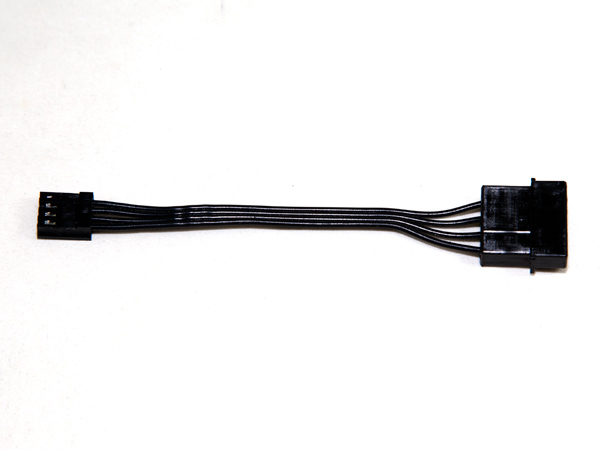
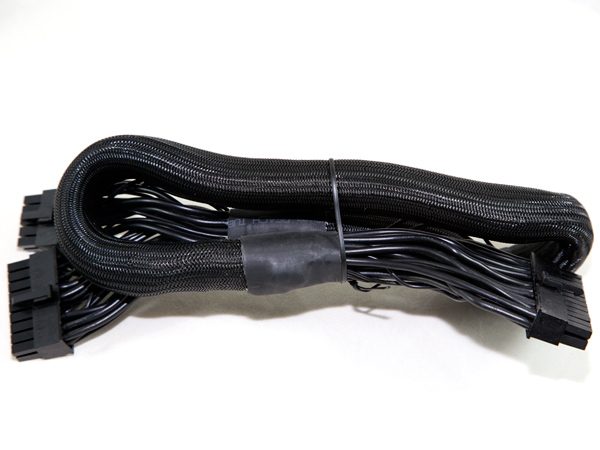
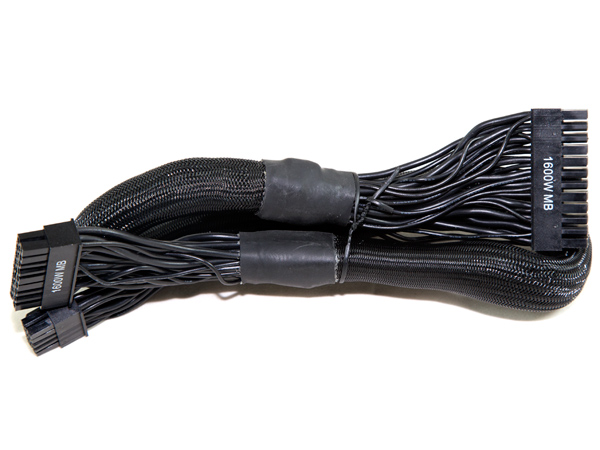
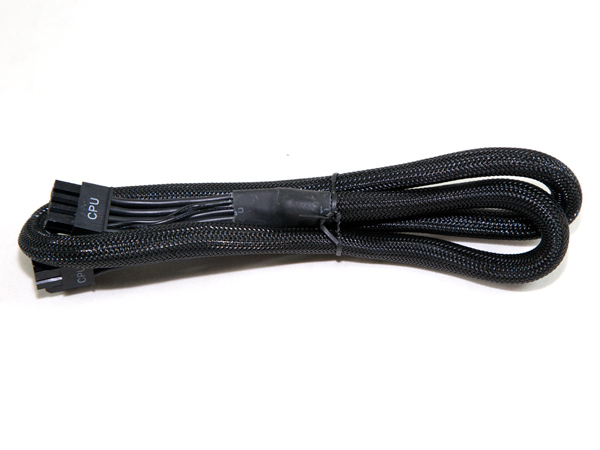
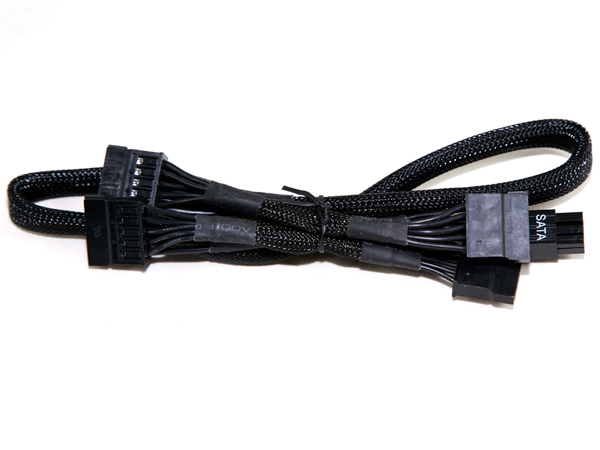
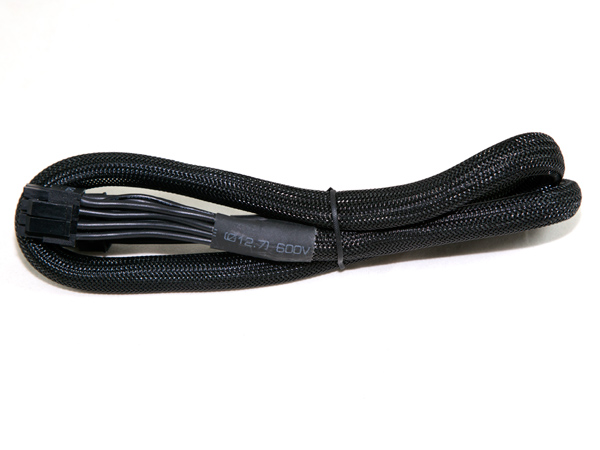
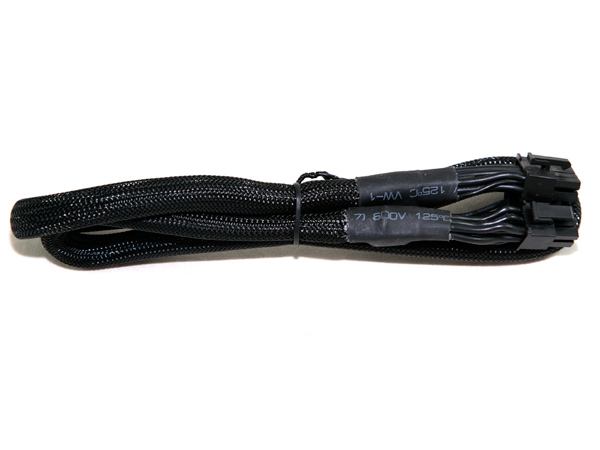
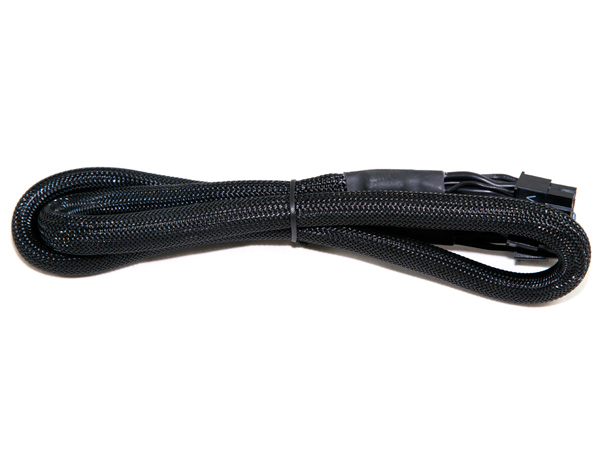
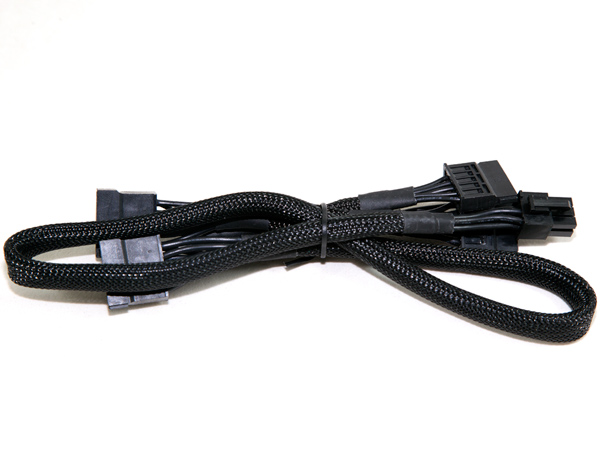

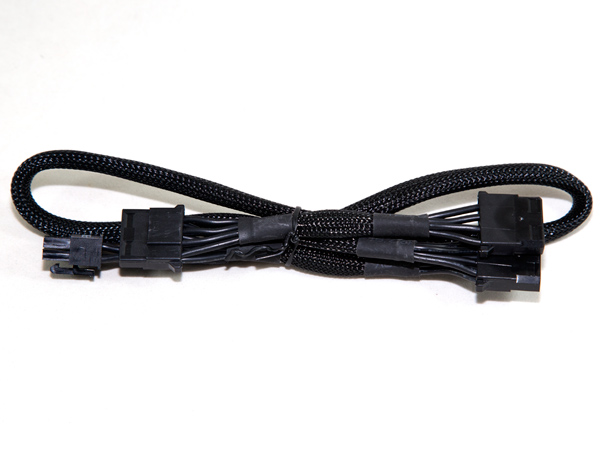
All cables are fullly sleeved, of course. Although the sleeve quality isn't the best we've seen, it is satisfactory.
If you need higher quality and more attractive cables, then you can select one of EVGA's individually-sleeved cabling kits. They aren't cheap though, priced at $90 each).
Current page: Packaging, Contents And Exterior
Prev Page Specifications, Cables And Power Distribution Next Page A Look Inside And Component Analysis
Aris Mpitziopoulos is a contributing editor at Tom's Hardware, covering PSUs.
-
damric Good review, but missing the hot box testing to see if this thing regulates and suppresses ripple at 50C as advertised.Reply -
Aris_Mp All tests were conducted at high ambient temperatures which during full load were above 47C. Only the Cross-Load tests were conducted at 28-30C.Reply -
Giannis Karagiannis Very detailed review indeed. There isn't really anything that could be covered and it is not. I don't think that there are many PSU manufacturers out there that can test their products so extensively.Reply -
Aris_Mp I had the opportunity to test the 2 kW model (from Super Flower) and it is indeed superb. But it will provide 2 kW only with 230 VAC input since a normal socket can deliver only up to 15 A of current.Reply -
damric Reply15234131 said:Too light for me I have the 2000w coming from Dabs when it comes to retail.
Where are you from that you need all that power? Cybertron? -
damric Reply15233469 said:All tests were conducted at high ambient temperatures which during full load were above 47C. Only the Cross-Load tests were conducted at 28-30C.
47C ambients? Must have been sweating your language, please off, or you are language, please me. -
damric Reply15234630 said:I'm going to power my Skynet build with it.
One day you need to show us a picture of everything. I've seen little snapshots here and there, but I'd like to see it all in one thread.